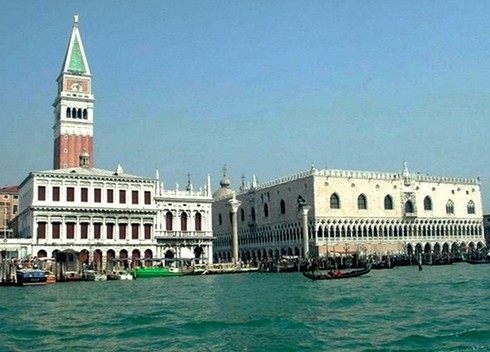Venice has begun sinking again and is even tilting slightly eastward, new satellite measurements have revealed.

Despite previous studies suggesting the subsidence had levelled off, new research indicates that the lagoon city continues to sink an average of one to two millimeters (0.04 to 0.08 inches) a year. That’s more than researchers previously thought.
“It’s a small effect, but it’s important,” Yehuda Bock, a research geodesist with Scripps Institution of Oceanography at the University of California, San Diego, in La Jolla, Calif., said.
With the Adriatic rising in the Venetian lagoon at the same rate, the combined effect is a 4mm (0.16 inches) a year increase in sea level. This means that Venice could sink up to 80 mm (3.2 inches) by 2032.
The study, which will be published March 28 in Geochemistry, Geophysics, Geosystems, a journal of the American Geophysical Union, also found that the City of Water in north-east Italy is listing one millimeter or two (0.04 to 0.08 inches) eastward per year, meaning that the western part is higher than the rest.is listing one millimeter or two (0.04 to 0.08 inches) eastward per year, meaning that the western part is higher than the rest.
Prior satellite analyses didn’t pick up on the tilt, Bock said.
NEWS: Planning for a Devastating Sea Level Rise
Bock worked on the project with colleagues from the University of Miami in Florida and Italy’s Tele-Rilevamento Europa, a company that specialises in the measurement of ground deformations.
The team used a combination of GPS and and satellite radar to map how Venice and its lagoon were drifting over the decade between 2000 and 2010.
“Our analysis clearly captured the movements over the last decade that neither GPS nor InSAR could sense alone,” said Shimon Wdowinski, associate research professor of Marine Geology and Geophysics at the University of Miami.
Advertisement
The subsidence was confirmed by the slow sinking of Venice’s 117 islands, with those in the north dropping at a rate of two to three millimeters (0.08 to 0.12 inches) per year, and those in the south subsiding at three to four millimeters (0.12 to 0.16 inches) per year.
Venice’s subsidence is well known. Precise measurements of the city’s sea level date only to 1872, but 18th-century Venetian landscapes by the artist Canaletto, so true to detail to portray the dark algae stains left on canal-side buildings by retreating high tides, allowed scientists to determine that the city has sunk more than 60 centimeters (2 feet) since 1727.
NEWS: Floods Show What Lies Ahead for Sinking Bangkok
The frequency of floods in Venice is now increasing, and about four or five times a year residents have to walk on wooden planks to stay above the floodwaters in large parts of the city.
According to the researchers, builders of the ambitious multi-billion euro MOSE flood-protection system, which is set for completion in 2014, will have to take into consideration “not only the rising of sea level, but also the subsidence,” they said.
However, researchers in Italy estimate that a subsidence of one-two millimeter per year is not a significant drop.
“One millimeter is nothing with respect to the problem that Venice experienced 20, 30 years ago,” said Pietro Teatini, a researcher with the University of Padova in Italy.
Indeed, Venice subsided about 120 mm ( 4.72 inches) in the 20th century due to natural process and groundwater extraction, plus saw a sea level rise of about 110 mm (4.33 inches) at the same time.
Luigi Tosi, a geologist at Italy’s Institute of Marine Science – National Research Council, agrees that the lagoon city has to face “a complex future” in which the MOSE’s adjustable barriers will have to be used very often.
According to Tosi, the sea rising, which could reach 50 centimeters (19.68 inches) by the end of the century, could be a significant problem.
“The gates are designed to close when the high tides reach a level of 110 centimeters (43.30 inches) above a certain point, about 10-20 times a year. With such a high sea rising, the 110 cm level will be reached many times, up to 200 days each year,” Tosi told the Italian news agency ANSA.
Tosi and colleagues from the University of Padova are working at a project which aims to uplift Venice by pumping seawater into the city’ subsoil.
“The MOSE could be helped by lifting Venice by 10 cm (3.93 inches). Theoretically, the model works very well, but much research is yet needed before putting it into action,” Tosi said.
Image: Venice continues to sink into its own lagoon. Credit: Bierdimpfl/Wikimedia Commons.

